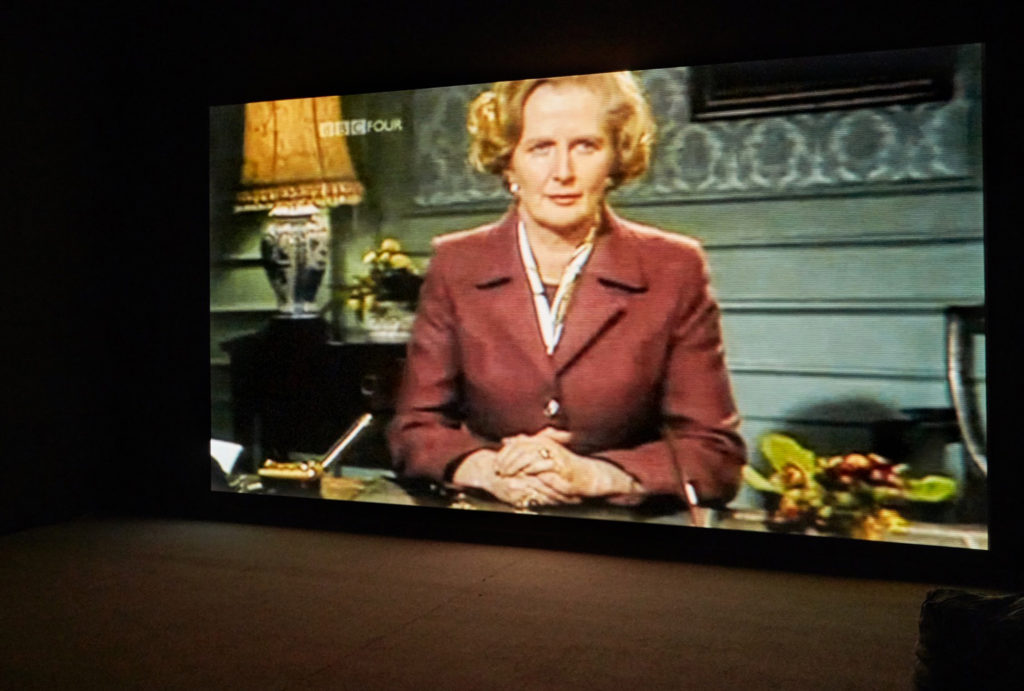Opinion
From Johan Grimonprez, a Look at War and Its Lies
THE DAILY PIC: At Sean Kelly, Johan Grimonprez's anti-war video has talking heads who raise doubts about their own talk.

THE DAILY PIC: At Sean Kelly, Johan Grimonprez's anti-war video has talking heads who raise doubts about their own talk.

Blake Gopnik

THE DAILY PIC (1730): One afternoon a few days ago, I set out to visit a bunch of Chelsea galleries—and never got farther than one. At Sean Kelly, the brand-new video called Blue Orchids, by Johan Grimonprez, stopped me in my tracks and ate up my entire art-looking slot.
The piece starts off looking like a relatively straightforward documentary. It pairs an interview with the war correspondent Chris Hedges, formerly of the New York Times and now suffering from PTSD, with footage of an arms dealer named Riccardo Privitera. I assume that most viewers’ sympathies will be with Hedges, although his experience with the military-industrial complex drives him to rare heights of fear and loathing, especially when it comes to such warmongers as Margaret Thatcher, Tony Blair and George W. Bush. On the other hand, Privitera is such a compelling scoundrel and performer that he wins over the camera in a way that Hedges cannot. In a moment of special humanity, he even sheds tears at the violence he witnessed as a distinguished special-forces officer.
Privitera’s death, toward the end of the film, comes as rather a shock—until we learn that it didn’t ever happen. He staged it—briefly, it seems—apparently to cover up the fact that he was doing seven years in a Portuguese prison. A visit with him there reveals that he was never, in fact, the fancy soldier he had made himself out to be, but some kind of all-around imposter who happened to trade in arms. In that moment of revelation, all our certainties about who was who in Grimonprez’s film, and what they were up to, start to come unstuck. Privitera’s deceptions start to leach into our view of Hedges, whose self-described mental troubles don’t exactly make him come off as the world’s most reliable witness or thinker, especially on the topic of war.
Grimonprez’s video is like a painting that seems to be rendered in a high-realist mode, until we realize that its perspective is subtly skewed and that some of its figures may not be drawn completely from life. The realism itself never quite fades, but our readings of it become less stable.
It’s worth watching Grimonprez’s piece all the way through more than once, to witness the breakdown of our own certainties. (Photo by Jason Wyche, courtesy Sean Kelly, New York)
For a full survey of past Daily Pics visit blakegopnik.com/archive.